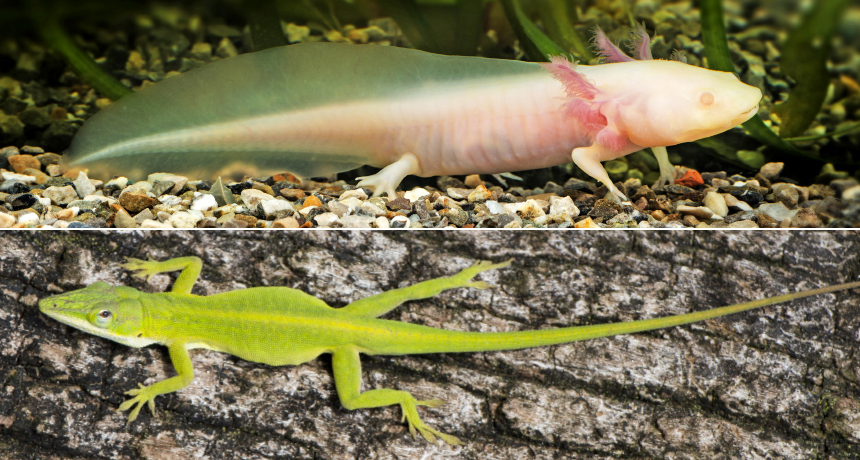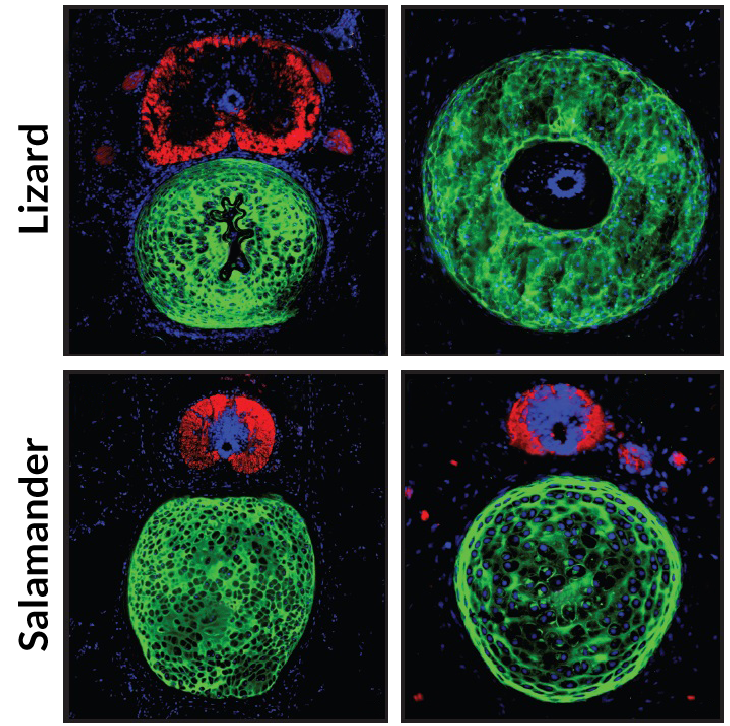How salamanders can regrow nearly complete tails but lizards can’t
Neural stem cells in the spinal cord prevent the reptiles from regenerating nerve cells

TAIL TROUBLE Salamanders such as the axolotl (above) can regrow nearly perfect tails, including missing nerve cells. Lizards such as the green anole (below) can’t.
From top: Kuttelvaserova Stuchelova/Shutterstock; Holly Guerriox/iStockphoto







